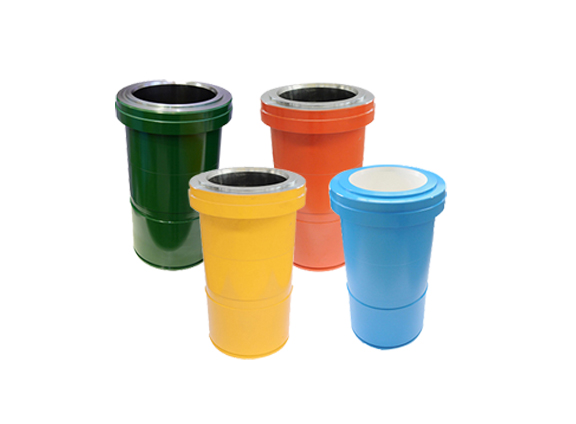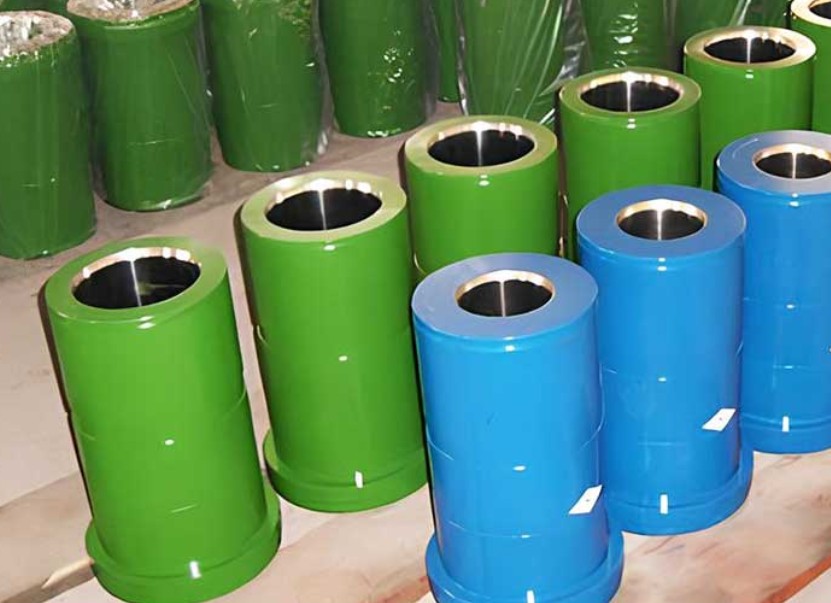In the oil and gas drilling industry, the mud pump is considered the “heart” of the entire drilling fluid circulation system—and the liner is one of its most critical components. The liner not only withstands high pressure but also ensures the stable delivery of drilling fluids under extreme operating conditions. Its pressure rating, as a key metric of load-bearing safety, directly impacts the safety, efficiency, and lifespan of drilling operations.
This guide dives deep into the pressure rating of mud pump liners—covering technical insights, selection methods, and influencing factors—to help you choose the ideal liner for your drilling environment.
The Role and Working Principle of Mud Pump Liners
The mud pump liner is the part that directly interfaces with the piston and plays two essential roles:
- High-pressure sealing: Forms a sealed high-pressure chamber with the piston to prevent fluid leakage.
- Wear and corrosion resistance: Endures direct contact with drilling mud that often contains abrasive particles and chemical additives.
To perform efficiently, a liner must possess three key characteristics:
- Pressure resistance – withstand high operating pressures
- Abrasion resistance – endure continuous particle erosion
- Corrosion resistance – handle chemically active mud formulations
Among these, pressure rating is the most crucial factor in determining liner compatibility with specific drilling conditions.

Why Pressure Rating Matters
As well depth increases, so does formation pressure. For every additional 1,000 meters, formation pressure can rise by 15–20 MPa. If the liner’s pressure rating is inadequate, the following problems can arise:
- Equipment failure risk: Liners can crack or deform under pressure, causing piston wear, cylinder damage, or total pump failure.
- Safety hazards: High-pressure fluid leaks can lead to blowouts or equipment ejection.
- Increased costs: Downtime for liner repair or replacement delays drilling and adds labor and material costs.
- Reduced efficiency: Unstable pressure affects cuttings transport and lowers Rate of Penetration (ROP).
Thus, pressure rating is not just a spec—it’s a cornerstone of safe and uninterrupted drilling operations.
How Mud Pump Liner Pressure Ratings Are Expressed
Liner pressure ratings are commonly denoted in:
- psi (pounds per square inch)
- MPa (megapascal)
Conversion: 1 MPa ≈ 145 psi
Common pressure classes:
- Low to mid pressure: 5,000 psi (≈ 34.5 MPa)
- Medium-high pressure: 7,500 psi (≈ 51.7 MPa)
- High pressure: 10,000 psi (≈ 68.9 MPa) and above
Pro Tip: Always include a 20–30% safety margin to accommodate sudden pressure spikes.

Mud Pump Liner Pressure Rating Selection Chart
Here’s a typical reference table for triplex (three-cylinder, single-acting) mud pumps:
| Mud Pump Model | Liner Diameter (mm) | Max Pressure (psi) | Max Pressure (MPa) | Recommended Use |
|---|---|---|---|---|
| 3NB-800 | 150–200 | 7,500 | 51.7 | Medium-depth wells, standard formations |
| 3NB-1600 | 180–230 | 5,000–7,500 | 34.5–51.7 | Medium-high pressure, land rigs |
| F-1600 | 160–200 | 10,000 | 68.9 | Deep wells, HP wells |
| 110NB-3 | 200 | 6,100 | 42.1 | Deep, complex formations |
| HH Series | 150–180 | 15,000 | 103.4 | Ultra-deep, HPHT wells |
Note: Larger liner diameters usually support lower pressures. E.g., a 230 mm liner for the 3NB-1600 suits 5,000 psi, while 180 mm fits 7,500 psi.
How to Select the Right Pressure Rating
1. Match with Well Depth and Formation Pressure
| Well Type | Recommended Liner Pressure |
|---|---|
| Shallow (<2,000 m) | 5,000 psi (34.5 MPa) |
| Medium-depth | 7,500 psi (51.7 MPa) |
| Deep/HP wells | ≥10,000 psi (68.9 MPa) |
Use this formula:
Required Pressure Rating ≥ Formation Pressure × 1.2 (safety factor)
2. Balance Pressure vs. Flow Rate
- Higher flow rates require larger liners (lower pressure).
- Higher pressures require smaller liners (lower flow rate).
E.g., shallow fast drilling = 230 mm / 5,000 psi;
deep HP drilling = 180 mm / 10,000 psi.
3. Match Pump Model and Brand Specs
Each pump model requires compatible liner dimensions and strength:
- Derrick pumps need proprietary high-strength liners.
- MI-Swaco liners must follow strict diameter/pressure match rules.
Always provide pump brand, model, and serial number when ordering liners.
4. Leave Room for Pressure Surges
Typical causes of pressure spikes:
- Bit strikes hard formation
- Mud screens get blocked
- Valve failure leads to hydraulic pulses
Add 20–30% safety margin. For a working pressure of 5,000 psi, choose a 7,500 psi liner.
Key Factors Influencing Pressure Rating
1. Liner Material
- Alloy steel (e.g., 4140, 4340) – Tough and heat-treated to >1,000 MPa
- Ceramic composites (alumina) – 3–5× wear life, brittle, for abrasive wells
- Bimetallic liners – Steel base + wear-resistant alloy inner layer
2. Design and Precision
- Uniform wall thickness prevents stress points
- Smooth surface (Ra ≤ 0.8 μm) improves piston seal life
- Proper seal groove radius avoids cracks under pressure
3. Operating Conditions
- Solid content >8% increases wear and reduces pressure tolerance
- Acidic mud (pH<6) corrodes steel liners
- High-temp wells (>150°C) weaken liner yield strength
4. Maintenance
- Inspect every 100 hours
- Replace if wear >1 mm
- Use proper tools to avoid deformation during installation
Common Misconceptions
“Higher pressure rating is always better”
Wrong: High-rated liners are smaller, reduce flow rate, and cost more (up to 50% higher).
“All 200mm liners are equal”
Wrong: Different materials = different pressure limits.
“Rated pressure = actual performance”
Wrong: Worn liners lose strength. A 10,000 psi liner may only handle 7,000 psi after heavy use.
Conclusion: Smart Liner Selection = Safer, More Efficient Drilling
The pressure rating of a mud pump liner is the lifeline of drilling operations. Smart selection depends on four key principles:
Match formation pressure
Fit your pump model
Account for pressure surges
Balance performance and cost
besdrill offers a complete range of API-standard mud pump liners from 5,000 to 15,000 psi. Our engineers provide customized liner selection based on your well depth, formation pressure, and mud composition—ensuring optimal compatibility and performance.
Choose the right liner pressure rating, and keep your mud pump heart beating strong—safely, efficiently, and reliably.